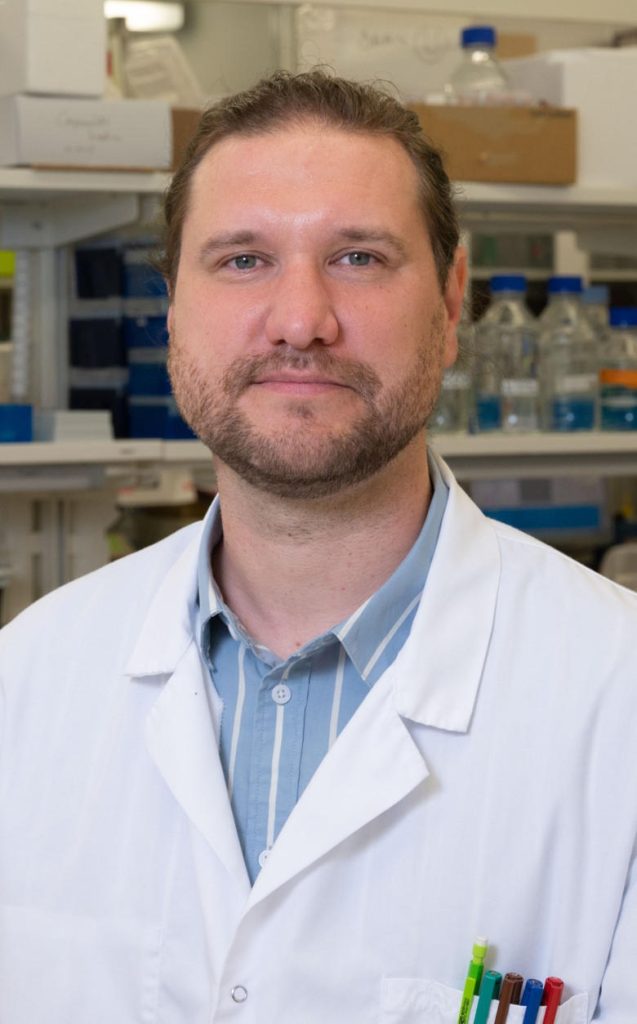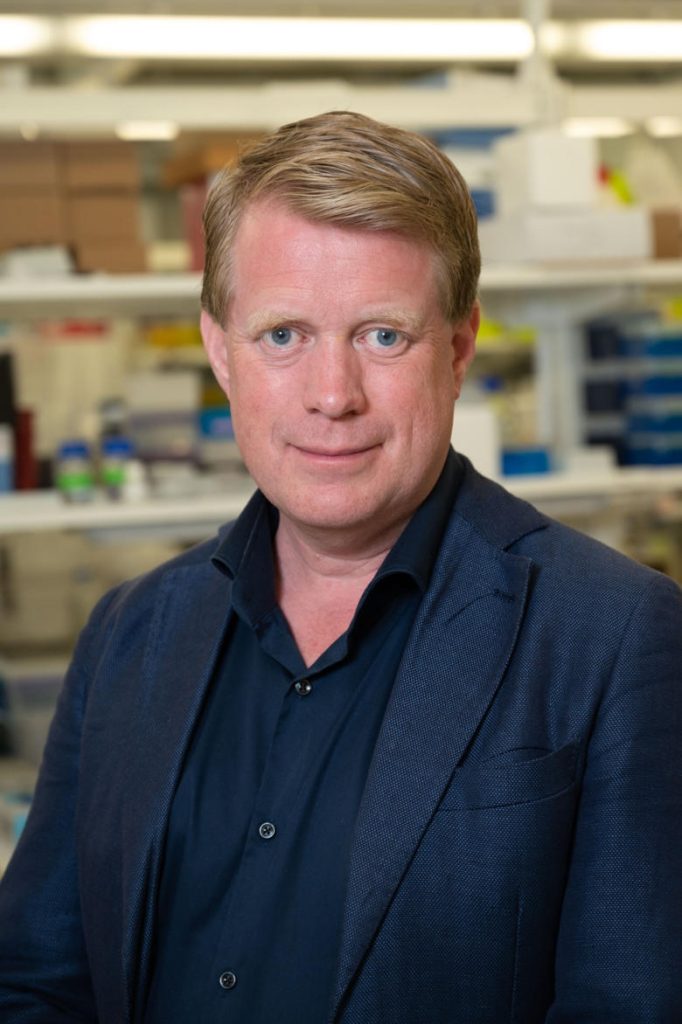
The paper provides a new technique for improving and changing the function of proteins.
Improved protein function opens the door to novel drug development possibilities.
Maurice Michel, assistant professor at the Department of Oncology-Pathology, Karolinska Institutet. Credit: Stefan Zimmerman
In a paper that was published in the journal Science, scientists from Sweden’s Karolinska Institutet and SciLifeLab reveal how they were able to enhance a protein’s ability to repair oxidative
Thomas Helleday, professor of the Department of Oncology-Pathology at Karolinska Institutet. Credit: Stefan Zimmerman
The catalyst made it possible for the enzyme to cut the DNA in an unusual way so that it no longer requires its regular protein APE1 to work but another protein called PNKP1.
The researchers believe that OGG1 proteins improved in this way can form new drugs for diseases in which oxidative damage is implicated. However, Professor Thomas Helleday at the Department of Oncology-Pathology, Karolinska Institutet and the study’s last author also sees broader applications, where the concept of adding a small catalyst molecule to a protein is used to improve and change other proteins as well.
New protein functions are generated
“We believe that this technology could instigate a paradigm shift in the pharmaceutical industry, whereby new protein functions are generated instead of being suppressed by inhibitors,” says Thomas Helleday. “But the technique isn’t limited to drugs. The applications are virtually unlimited.”
Reference: “Small-molecule activation of OGG1 increases oxidative DNA damage repair by gaining a new function” by Maurice Michel, Carlos Benítez-Buelga, Patricia A. Calvo, Bishoy M. F. Hanna, Oliver Mortusewicz, Geoffrey Masuyer, Jonathan Davies, Olov Wallner Kumar Sanjiv, Julian J. Albers, Sergio Castañeda-Zegarra, Ann-Sofie Jemth, Torkild Visnes, Ana Sastre-Perona, Akhilesh N. Danda, Evert J. Homan, Karthick Marimuthu, Zhao Zhenjun, Celestine N. Chi, Antonio Sarno, Elisée Wiita, Catharina von Nicolai, Anna J. Komor, Varshni Rajagopal, Sarah Müller, Emily C. Hank, Marek Varga, Emma R. Scaletti, Monica Pandey, Stella Karsten, Hanne Haslene-Hox, Simon Loevenich, Petra Marttila, Azita Rasti, Kirill Mamonov, Florian Ortis, Fritz Schömberg, Olga Loseva, Josephine Stewart, Nicholas D’Arcy-Evans, Tobias Koolmeister, Martin Henriksson, Dana Michel, Ana de Ory, Lucia Acero, Oriol Calvete, Martin Scobie, Christian Hertweck, Ivan Vilotijevic, Christina Kalderén, Ana Osorio, Rosario Perona, Alexandra Stolz, Pål Stenmark, Ulrika Warpman Berglund, Miguel de Vega and Thomas Helleday, 23 June 2022, Science.
DOI: 10.1126/science.abf8980
The study was funded by the European Research Council, the Swedish Research Council, the Crafoord Foundation, the Swedish Cancer Society, the Torsten and Ragnar Söderberg Foundation, and the Dr. Åke Olsson Foundation for Haematological Research.
Many of the researchers involved in the study are listed in a patent application concerning OGG1 inhibitors and are associated with the organization that owns the patent. Two are employed by Oxcia AB, which licenses the patent, and many are shareholders in the company.




